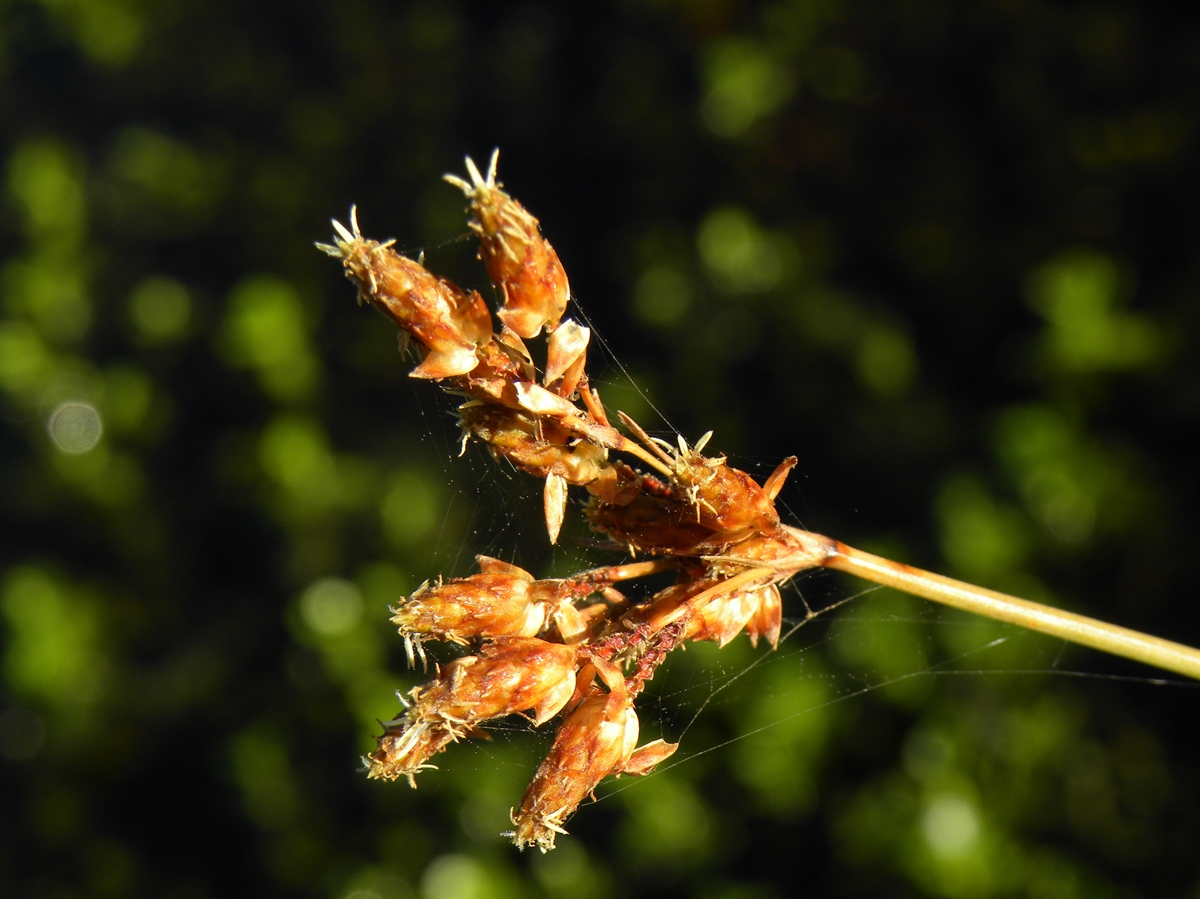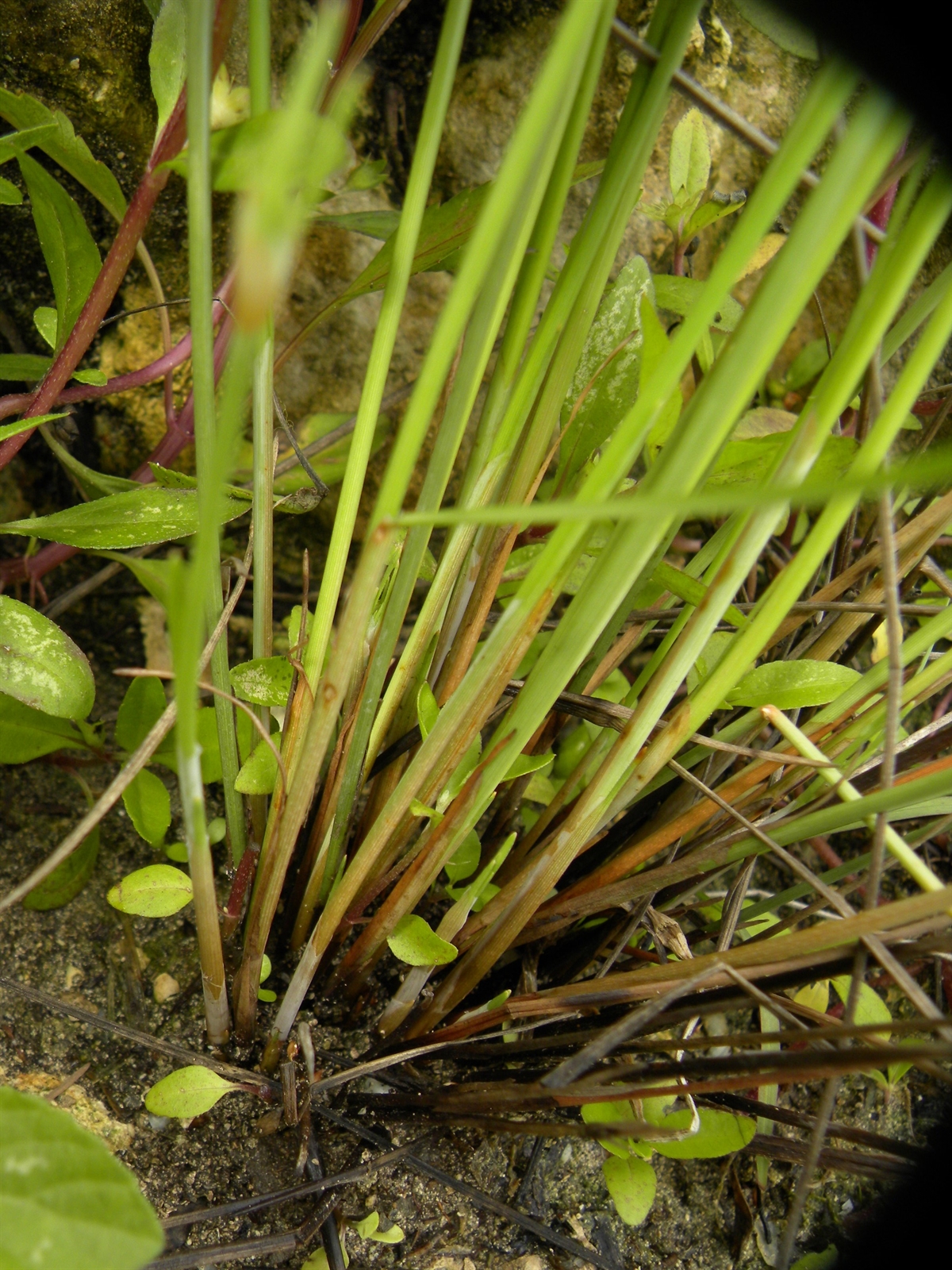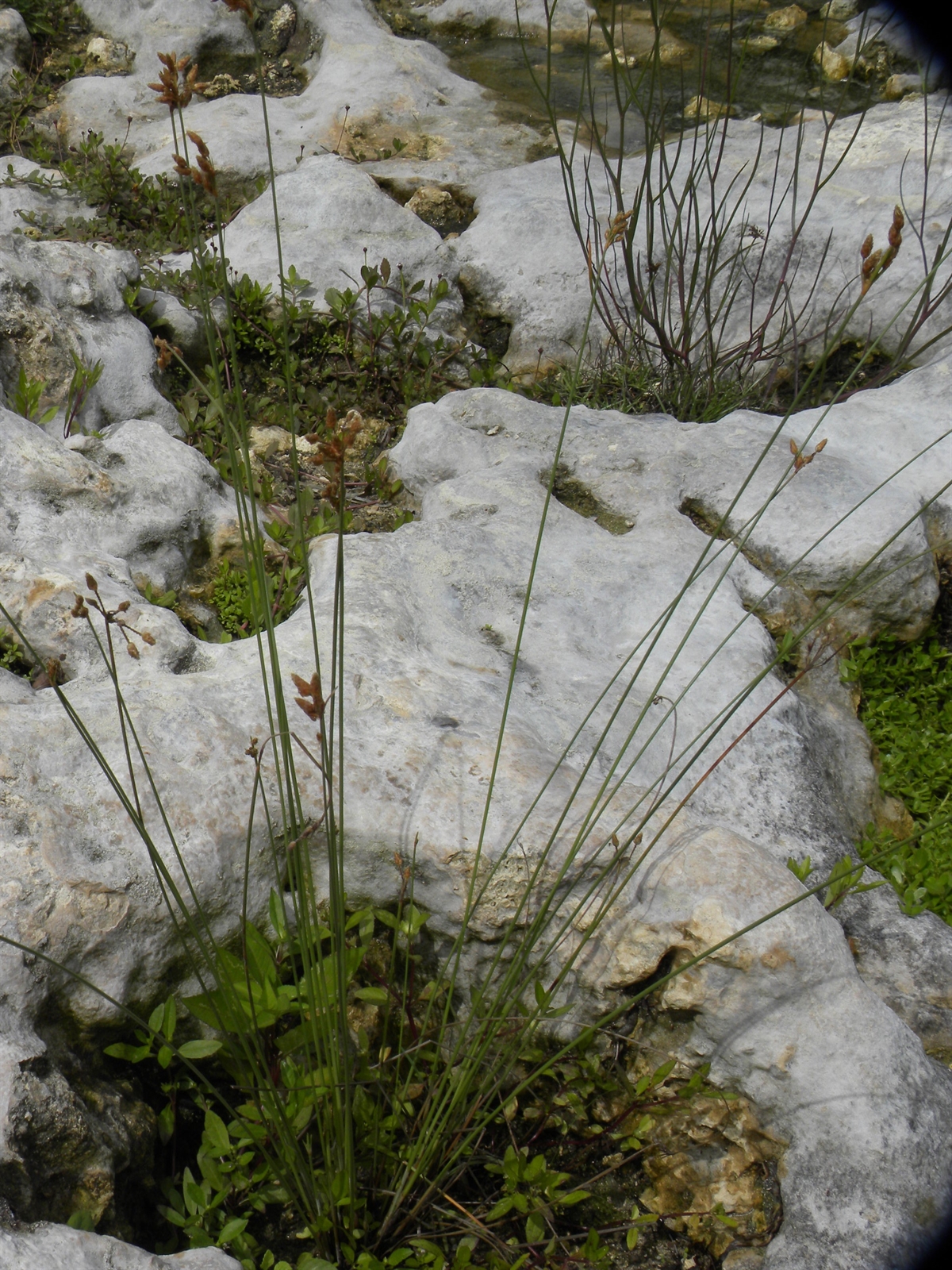Habit: Fimbristylis ferruginea grows as an herb in clumps. The leaves are reddish green, round at base, flat towards the leaf apex, to 90 cm (typically shorter) in length and 3 mm in width. The margin has ciliate hairs, with an acute leaf tip. The venation pattern is linear.
The incomplete, perfect, actinomorphic flowers are arranged in lax, compound cymes. The individual flowers are arranged in broadly oval spikelets each subtended by 2-3 scales. 2-6 spikelets are grouped at the ends of the inflorescence branches. The lower flowers in each spikelet are infertile. There is no calyx or corolla. The scales below fertile flowers are red/brown. There are 3 stamens. The ovary is superior with a single locule and a 2-cleft style. The fruit is a light to dark brown achene at maturity.
Habitat: Fimbristylis ferruginea grows along the edges of Fresh and Salt-water Wetlands, roadsides, and Dunes.
Distribution: Fimbristylis ferruginea occurs on all island groupings in the Lucayan Archipelago as well as tropical and subtropical regions of the world.
Medicinal/Cultural/Economic usage: Fimbristylis ferruginea is not used medicinally in the Lucayan Archipelago.


